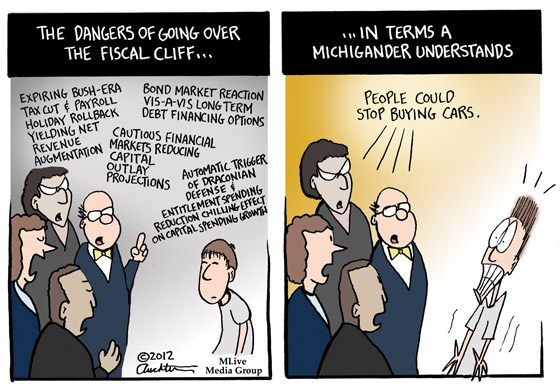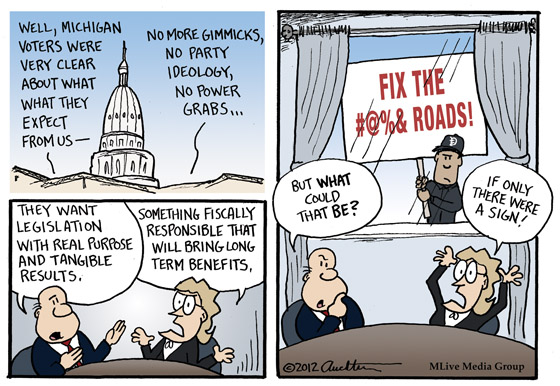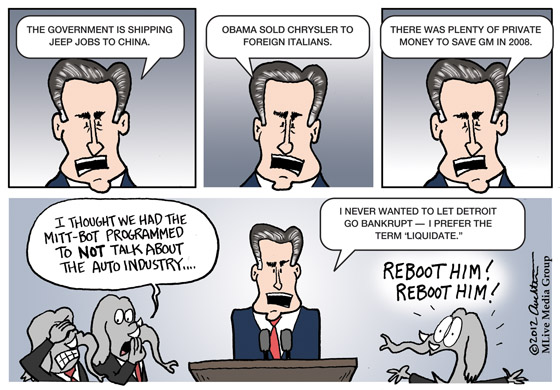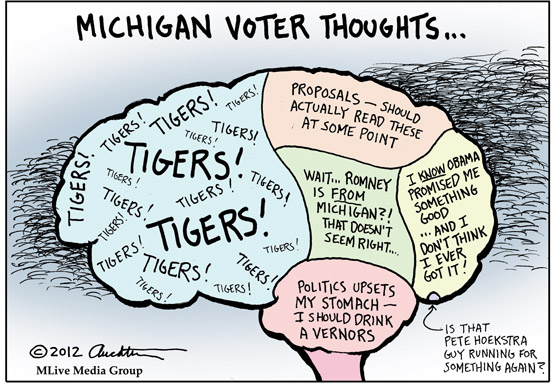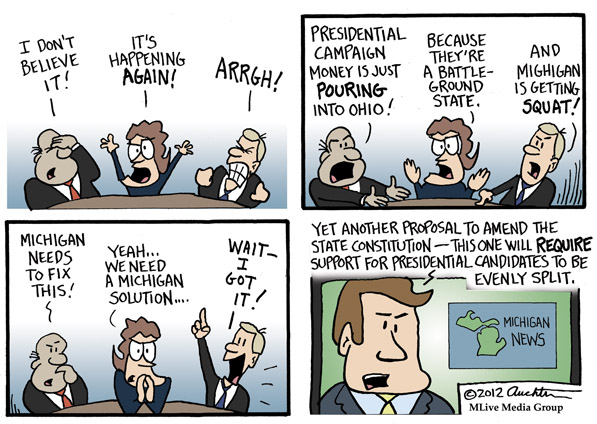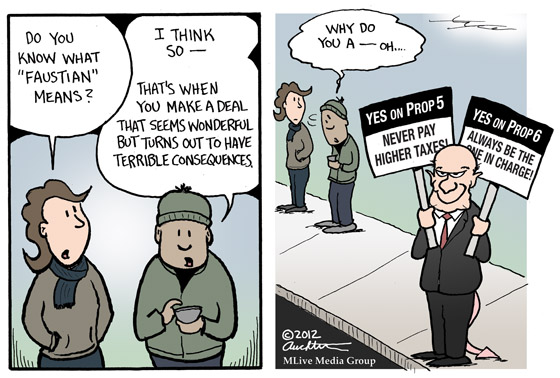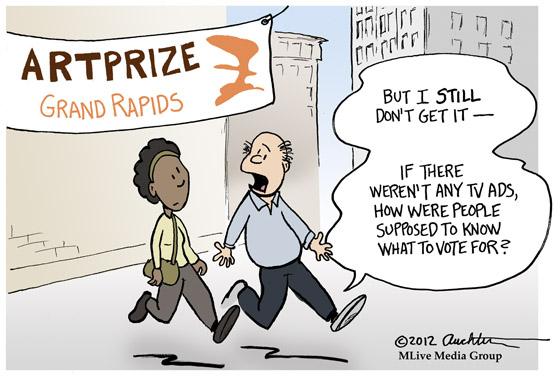Right-to-Work Not-So-Secret Motivations
Originally published in the Ann Arbor News, Bay City Times, Flint Journal, Grand Rapids Press, Jackson Citizen Patriot, Kalamazoo Gazette, Muskegon Chronicle, Saginaw News
December 9, 2012
I grew up in Flint. And one of the benefits of growing up in Flint (and stop snickering — there were many. If you aren’t from Flint, you just don’t know) is having a special insight on these right-to-work shenanigans. I’ve seen unions from the inside. I’ve experienced the good and the bad. I grew up in stable neighborhoods where hard-working folks earned a good wage and passed it forward to their children. I supervised in a foundry where a hopelessly bored worker made a cat and mouse game out of hiding from me at every opportunity — sometimes successfully for entire shifts for which he was paid. I heard my Dad tell stories about how it struck him that there were so many less missing eyes and fingers in Michigan factories than there were in the South Carolina factories he had previously made sales calls in. Or my brother-in-law working at the City of Flint and how oblivious the Firefighter union was to the fact that the tax base had totally eroded and there would have to be concessions.
But you know what? These are just like the enormous positives and squandered opportunities of any human institution — government, Wall Street, churches, newspapers, Detroit Lions. When humans are involved, really incredible and really stupid things can happen.
So as the cartoon suggests, I think this right-to-work law is nothing more than a deeply cynical power grab by the GOP. But the Democrats would do well to acknowledge that this is 2012, not 1972, and it’s time to stop looking at unions and labor purely as a revenue source. What was the word they were using all year? Oh yeah, forward.


